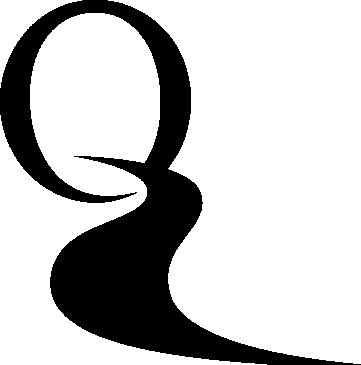PRIDOBIVA JE Z A JA IZ BESEDIL I SLIK
Sažetak
As numerous empirical studies consistently prove, the addition of a suitable picture to a text greatly speeds up learning and improves retention of material (Mayer 2005; Salomon 1994). As Weidenmann (1989) shows on the basis of a review of 48 experimental studies, illustrated texts have an advantage from the point of view of learning and retention. Test subjects who were presented with an illustrated text achieved scores that were on average 36 % higher than test subjects who had merely read or listened to a text. This effect appears with a wide variety of texts, pictures and tasks and with different types of learners. The advantages of illustrations for the acquisition of knowledge are based either on the simplification of the complex or on the presentation of the abstract in a more concrete manner; the two principles are not however equally suitable for the tackling of various tasks such as identification, classification, remembering sequences and patterns, problem solving, construction of mental models, structuring the content of a text, etc. This paper deals with the functions of pictures and the use of various types of pictorial presentation in different tasks.
Downloads
##submission.citations##
B.B. Armbruster, T.H. Anderson, J. Ostertag // The Reading Teacher. 1989. 43. P. 130-
137.
Bartram D.J. Comprehending spatial information: The relative efficiency of different
methods of presenting information about bus routes / D.J. Bartram // Journal of Applied
Psychology. 1980. 65. P. 103-110.
Bock M. et al. Pictorial Context and the Recall of Pronoun Sentences / M. Bock, B. Milz //
Psychological Research. 1977. 39. P. 203-220.
Bock M. The influence of pictures on the processing of texts: Reading time, intelligibility,
recall, aesthetic effect, need for rereading / M. Bock // G. Rickheit, M. Bock (eds.)
Psycholinguistic Studies in Language Processing. Berlin, New York: Walter de Gruyter,
1983. P. 218-236.
Carrier C. et al. Using microcomputers with fourth-grade students to reinforce arithmetic skills /
C. Carrier, T.R. Post, W. Heck // Journal for Research in Mathematics Education. 1985.
16. P. 45-51.
Duchastel P. Illustrating instructional texts / P. Duchastel // Educational Technology. 1978. 18.
P. 36-39.
Flavell J.H. Metacognition and cognitive monitoring. A new area of cognitive-developmental
inquiry / J.H. Flavell // American Psychologist. 1979. 34. P. 906-911.
Gick M. L. Two functions of diagrams in problem solving by analogy / M.L. Gick // Mandl H.,
Levin J.R. (eds.) Knowledge Acquisition from Text and Pictures. Amsterdam: Elsevier
(North-Holland), 1989.
Holliday W.G. et al. Differential cognitive and affective responses to flow diagrams in
science / W.G. Holliday, L.L. Brunner, E.L. Donais // Journal of Research in Science
Teaching. 1977. 14. P. 129-138.
Levie H.W. et al. Effects of text illustration: A review of research / H.W. Levie, R. Lentz //
Educational Communication and Technology Journal. 1982. 30. P. 195-232.
Levin J.R. On Functions of Pictures in Prose / J.R. Levin // Pirozzolo F.J., Wittrock M.C. (eds.)
Neuropsychological and Cognitive Processes in Reading. New York: Academic Press,
1981.
Levin J.R. et al. On empirically validating functions of pictures in prose / J.R. Levin,
G.J. Anglin, R.N. Carney // Willows D.M., Houghton H.A. (eds.) The psychology of
illustration (51-85). New York: Springer, 1987.
Mayer R.E. Multimedia learning / R.E. Mayer. New York: Cambridge University Press,
2001.
Mayer R.E. The Cambridge handbook of multimedia learning / R.E. Mayer. Cambridge:
Cambridge University Press, 2005.
Molitor S. et al. Problems in knowledge acquisition from text and pictures / S. Molitor, S.-
P. Ballstaedt, H. Mandl // Mandl H., Levin J.R. (eds.) Knowledge Acquisition from Text
and Pictures. Amsterdam: Elsevier (North-Holland), 1989.
Moyer J.C. et al. Story problem formats: Drawn versus verbal versus telegraphic / J.C. Moyer,
L. Sowder, J. Threadgill-Sowder, M.B. Moyer // Journal for Research in Mathematics
Education. 1984. 15. P. 342-351.
Paivio A. Imagery and Verbal Processes / A. Paivio. New York: Holt, Rinehart & Winston,
1971.
Salomon G. Interaction of media, cognition, and learning / G. Salomon. Hillsdale, NJ:
Erlbaum, 1994.
Schnotz W. Sign systems, technologies, and the acquisition of knowledge / W. Schnotz //
Rouet J.F., Levonen J., Biardeau A. (eds.) Multimedia learning – cognitive and
instructional issues. Amsterdam: Elsevier, 2001.
Schnotz W. An integrated model of multimedia learning / W. Schnotz // Mayer R.E. (ed.) The
Cambridge handbook of multimedia learning (49-69). Cambridge: Cambridge
University Press, 2005.
Schnotz W. et al. Construction and interference in learning from multiple representation /
W. Schnotz, M. Bannert // Learning and Instruction. 2003. 13. P. 141-156.
Seel D.M. et al. Presentation of information by media and its effect on mental models /
N.M. Seel, P. Strittmatter // Mandl H., Levin J.R. (eds.) Knowledge Acquisition from Text
and Pictures. Amsterdam: Elsevier (North-Holland), 1989.
Vizjak Pavšič M. i dr. Oko duha: značilnosti in procesiranje mentalnih predstav / M. Vizjak
Pavšič, J. Musek, V. Rajkovič // Anthropos. 1996. 3-4. S. 183-194.
Vizjak Pavšič M. Razumevanje in reprezentacija znanja / M. Vizjak Pavšič // Filologičeskie
zametki: Mežvuzovskij sbornik naučnyh trudov / ur. T. Jerofejeva J. Mojsieva-Guševa,
Ž. Knap. Perm-Skopje-Ljubljana, 2006. T. I. Vyp. 4. S. 50-59.
Waller R. Understanding network diagrams / R. Waller // Paper presented at the annual
meeting of the American Educational Research Association. Los Angeles, 1981.
Weidenmann B. When good pictures fail: an information-processing approach to the effect of
illustrations / B. Weidenmann // Mandl H., Levin J.R. (eds.) Knowledge Acquisition from
Text and Pictures. Amsterdam: Elsevier (North-Holland), 1989.
Winn W. The design and use of instructional graphics / W. Winn // Mandl H., Levin J.R. (eds.)
Knowledge Acquisition from Text and Pictures. Amsterdam: Elsevier (North-Holland),
1989.
Autori predstavljaju časopisu originalne radove temeljene na rezultatima vlastitih istraživanja. Suautori su osobe koje su u značajnoj mjeri doprinijele radu. Autor (i suautori) šalju članak zajedno s popunjenim Prijavnim obrascem (Paper Submission Form) koji ujedno ima svrhu suglasnosti s objavljivanjem rada.
Časopis prima neobjavljene znanstvene radove. Ne primaju se članci koji u velikoj mjeri ponavljaju već objavljene radove autora. U ponavljanja se ubraja kompilacija, odnosno tekst sastavljen od isječaka iz objavljene monografije ili od isječaka iz nekoliko drugih radova. Nedopustivi su plagijati i pretjerano citiranje tuđih radova (trećina ukupnoga opsega članka, ili više). Svi citati, posuđeni ulomci i građa trebaju biti popraćeni uputnicom na izvornik, odnosno na autora i primarni izvor. U slučaju ako je udio tuđeg teksta prevelik, autoru će se preporučiti skraćivanje citata i proširenje opsega originalnoga teksta.
Autor treba dobiti sva potrebna dopuštenja za korištenje posuđene građe (ilustracije i sl.), a za koja on ne posjeduje autorska prava. Autor jamči da članak ne sadrži podatke koji nisu pogodni za javno objavljivanje, između ostaloga i tajne podatke.
Popis literature obuhvaća samo one bibliografske jedinice i poveznice koje su zaista upotrijebljene tijekom istraživanja i koje su u tekstu
Preporuka je da se u tekstu navedu podaci o financijskoj podršci provedenog istraživanja (ako ona postoji). Također se može navesti i zahvala kolegama koji su pripomogli nastanku rada, a koji nisu suautori.
Predajući uredništvu rukopis i Prijavni obrazac autor je službeno dao suglasnost da se njegov rad objavi u časopisu Filološke studije. Autor je i dalje vlasnik autorskih prava članka. Autori imaju pravo povući članak u bilo kojoj fazi njegova razmatranja (do trenutka njegove objave na internetskoj stranici) uz to da trebaju o tome pismeno obavijestiti uredništvo.
Objava članaka je besplatna. Sadržaj je dostupan uz licencu Creative Commons Attribution-Noncommercial-No Derivative Works 3.0 Unported License.









